Lyme Disease Rashes and Look-alikes
“Classic” Lyme disease rash

Description:
Circular red rash with central clearing that slowly expands.
Expanding rash with central crust
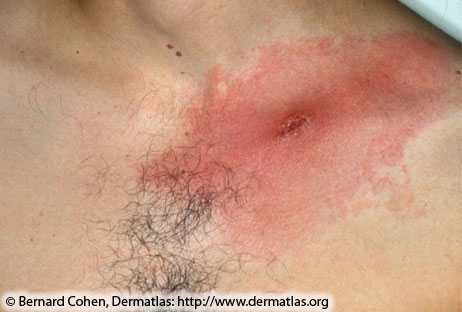
Photo Credit: Bernard Cohen
Description:
Red, expanding lesion with central crust.
Multiple rashes, disseminated infection
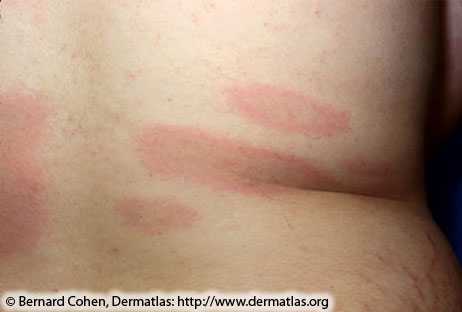
Photo Credit: Bernard Cohen
Description:
Early disseminated Lyme disease; multiple red lesions with dusky centers.
Red, oval plaque on trunk
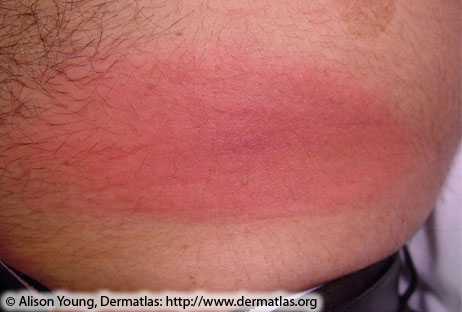
Photo Credit: Alison Young
Description:
Red, oval-shaped plaque on trunk.
Expanding rash with central clearing
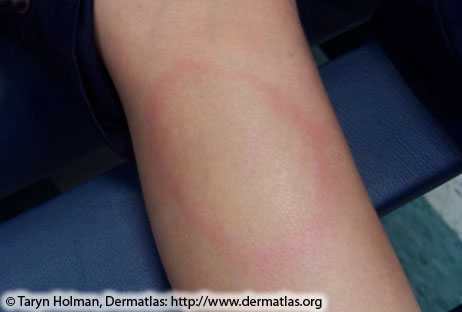
Photo Credit: Taryn Holman
Description:
Circular red rash with central clearing that slowly expands.
Bluish rash, no central clearing

Photo Credit: Yevgeniy Balagula
Description:
Bluish hue without central clearing.
Red-blue lesion with central clearing
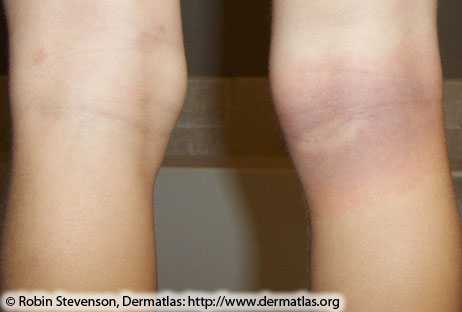
Photo Credit: Robin Stevenson
Description:
Red-blue lesion with central clearing on back of knee.
Insect bite hyper-sensitivity

Photo Credit: Chris Ha
Description:
Large itchy rash caused by an allergic reaction to an insect bite.
Fixed drug reaction
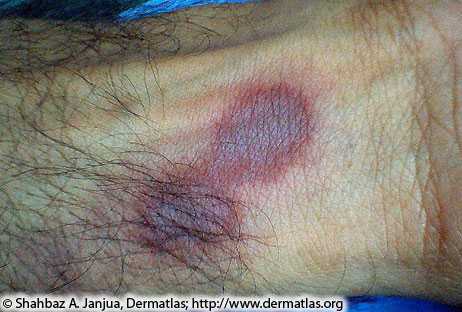
Photo Credit: Shahbaz A. Janjua
Description:
A skin condition that occurs up to two weeks after taking a medication. The skin condition reappears at the same location every time a particular medication is taken.
Ringworm (Tinea corporis)
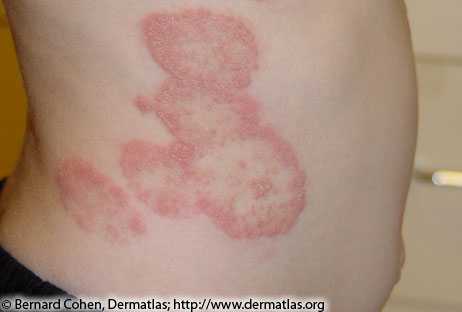
Photo Credit: Bernard Cohen
Description:
Ringworm is a common skin infection that is caused by a fungus. It’s called “ringworm” because it can cause a circular rash (shaped like a ring) that is usually red and itchy with raised edges.
Pityriasis rosea rash
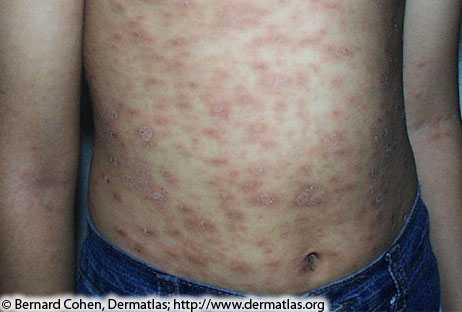
Photo Credit: Bernard Cohen
Description:
A rash without a known cause that can be a round or oval, pink, and scaly with a raised border. It can sometimes itch. Larger patches than the one shown here are also common.
Granuloma annulare rash
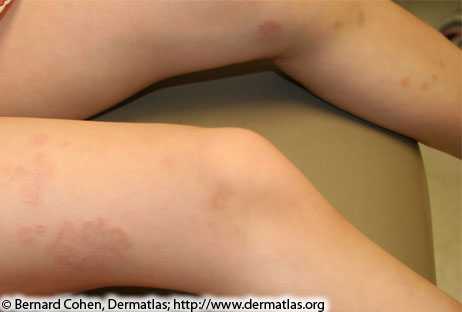
Photo Credit: Bernard Cohen
Description:
Reddish bumps on the skin arranged in a circle or ring.
Urticaria multiforme
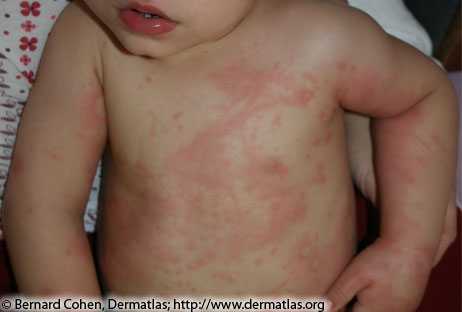
Photo Credit: Bernard Cohen
Description:
Also known as hives. Often caused by an allergic reaction to food, an infection, or a medicine. May burn or itch.
- Page last reviewed: March 4, 2015
- Page last updated: September 4, 2015
- Content source:


 ShareCompartir
ShareCompartir